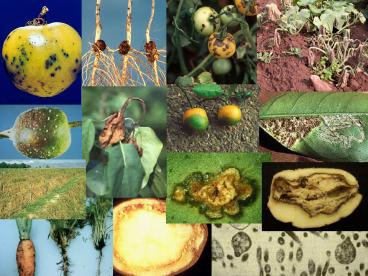Bacterial Anatomy - PowerPoint PPT Presentation
1 / 41
Title: Bacterial Anatomy
1
(No Transcript)
2
Bacterial Anatomy Cell wall and membranes
Cytoplasm and periplasm Genome
Chromosome(s) and plasmids (DNA)
Extracellular polysaccharide Flagella, pili,
and fimbriae
3
(No Transcript)
4
How do bacteria exchange genes? horizontal
gene transfer lateral gene transfer
plasmids phage transposons, insertion
elements (jumping genes) natural transformation
competence
5
Bacteria reproduce by fission
How old is a bacterial cell? (this is a trick
question!)
6
Bacteria multiply quickly!
1 2 4 8 16 32 64 128 256 512 1024
1024 2048 4096 8192 16384 32768 65536 131072 26214
4 524288 1048576
7
Linear Scale
What is a log scale?
Day bacterial cells 1
1000 2 100,000 3 1,000,000 4 8,000,000 5
10,000,000
of bacteria
1000 10x10x10 103 So, 1000 -gt 3
Log Scale
Day bacterial cells 1 3 2
5 3 6 4 6.9 5 7
7
6
5
of bacteria
4
3
2
1
1
2
3
4
5
DAYS
8
Example of a one log reduction in bacterial
population 10,000,000 bacteria reduced to
1,000,000 bacteria 1 log reduction 90
reduction Example of a two log
reduction 10,000,000 bacteria reduced to 100,000
bacteria 2 log reduction 99
reduction Example of a three log
reduction 10,000,000 reduced to 10,000
bacteria 3 log reduction 99.9 reduction
9
Bacteria digest their food outside of their cells
Secretion systems are key for bacterial
pathogenesis
10
Bacteria have either ONE or TWO cell membranes
One membrane Gram POSITIVE bacteria Two
membranes Gram NEGATIVE bacteria
11
The number of membranes affects the secretion
system structure
Gram Gram -
Y
First question is the species Gram positive or
Gram negative?
12
Gram negative bacteria cause many types of plant
diseases
Tumors/Galls
Specks and Spots
Wilts and Rots
13
Agrobacterium tumefaciens Crown Gall Disease
Galls at crown of plant Mostly on woody plants
14
Agrobacterium tumefaciens Crown Gall Disease
15
Agrobacterium tumefaciens Crown Gall Disease
16
Agrobacterium tumefaciens Crown Gall Disease
An example of Selfish Genes
17
Bio-engineering plants with Agrobacterium
18
Agrobacterium tumefaciens Crown Gall Disease
Example of herbicide resistant sugarcane via
Agrobacterium
19
Agrobacterium tumefaciens Crown Gall Disease
A successful example of biocontrol Agrobacterium
radiobacter strain K84 Agrocin 84
20
Other bactererial pathogens cause galls,
including some species of Pseudomonas and Erwi
nia However, these galls are due to hormones
produced by the bacteria and not caused by DNA
transfer into plants.
Pseudomonas savastanoi
21
Agrobacterium tumefaciens Crown Gall Disease -
REVIEW
Pathogen gram-negative rod Symptoms galls /
tumors Virulence mechanism transformation of
plants with a piece of bacterial DNA, causes
plant to form a tumor and produce food for
Agrobacterium cells. Control biocontrol with
A. radiobacter, which produces a toxin that only
is taken up by certain tumor forming
Agrobacterium strains, and through sanitation of
equipment Industrial use plant transformation,
construction of genetically-modified plants
22
Important Concepts in Phytobacteriology
Bacterial pathogens gain access to plants through
wounds or natural openings. They do not make
their own openings into plants Bacterial
pathogens can acquire new virulence genes via
horizontal transfer Bacterial pathogens can
manipulate plant cells by injecting DNA into the
plant cells
23
Pseudomonas syringae spots, specks, and blights
Grows on leaves, stems, and germinating
seeds Pseudomonas syringae is able to infect
most plant species, but individual strains are
limited to a few species or even a few cultivars
within a species. (pathovars)
Bacterial blight of lilac
Bacterial speck of tomato
Blister spot of Mutsu apple
24
Pseudomonas syringae spots, specks, and blights
25
Pseudomonas syringae spots, specks, and blights
of bacteria
days
26
Pseudomonas syringae spots, specks, and blights
Same genes are required for Pseudomonas syringae
to cause the hypersensitive response and disease
symptoms. What do these genes do?
27
Pseudomonas syringae spots, specks, and blights
Pseudomonas syringae requires the T3SS to grow in
plant leaves. Two different plant pathogen T3SS
(plant cell wall)
28
Pseudomonas syringae spots, specks, and blights
29
Pseudomonas syringae spots, specks, and blights
T3SS disease and resistance.
P. syringae protein suppresses immune system,
plant protein recognizes effect of suppression
and initiates programmed cell death. Plant cell
dies, bacterial cells do not grow RESISTANCE.
P. syringae protein suppresses immune
system. DISEASE.
30
Pseudomonas syringae spots, specks, and blights
Most gram-negative bacterial pathogens have a T3SS
31
Pseudomonas syringae spots, specks, and blights
Toxins also play and important role in
disease Example Coronatine
32
Pseudomonas syringae spots, specks, and blights
33
Pseudomonas syringae spots, specks, and blights
34
Pseudomonas syringae spots, specks, and blights
The toxin coronatine mimics the plant immune
system molecule jasmonic acid
35
Pseudomonas syringae spots, specks, and blights
Coronatine toxin keeps leaf stomata open, may
help bacteria gain entrance into leaves.
36
Pseudomonas syringae spots, specks, and blights
Toxins -Chlorosis-inducing coronatine phaseolo
toxin tabtoxin -Necrosis-inducing syringopeptin
Plant enzymes cleave to final toxic product
Form pores in plant cell membrane
37
Pseudomonas syringae spots, specks, and blights
38
(No Transcript)
39
Pseudomonas syringae industrial uses
What temperature does water freeze at? Some P.
syringae strains makes a protein that causes ice
to form at a higher temperature -frost
damage -rain and snow? This protein is used in
snow-making machines at ski resorts.
40
Pseudomonas syringae spots, specks, and blights
Pathogen gram-negative rod bacterium Symptoms
brown spots or yellow chlorosis on leaves,
sometimes wilting diseases. T3SS protein
secretion system that injects bacterial proteins
into host cells. Proteins suppress resistance,
but can trigger plant immune system. Toxins play
important role in disease. Suppress immune
system, cause cell death, help bacteria enter
leaves Growth chamber results do not always
match field results Industrial use making snow
41
Important Concepts in Phytobacteriology
Bacterial pathogens gain access to plants through
wounds or natural openings. They do not make
their own openings into plants Bacterial
pathogens can acquire new virulence genes via
horizontal transfer Bacterial pathogens can
manipulate plant cells by injecting DNA or
proteins into plant cells or with toxins































